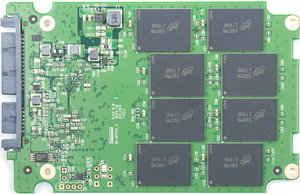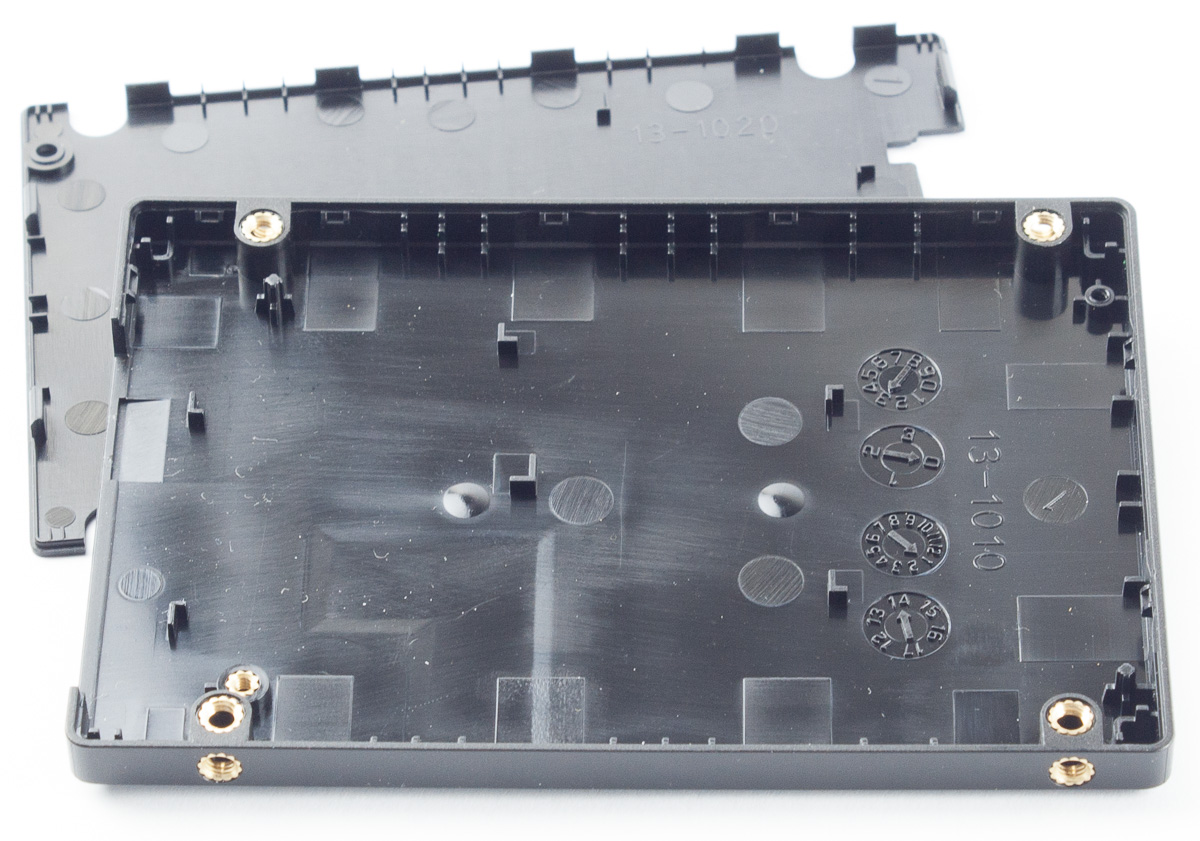Transcend SSD340 256 GB Review: Now With JMicron Inside
We have our first retail SSD with JMicron's JMF667H controller. Paying $115 for 256 GB of fast storage sure sounds attractive, but has the company ironed out the issues that plagued it in the early days of SSDs? We run its SSD340 through our grinder.
Transcend And JMicron Pair Up For The SSD340
If you're a storage enthusiast like I am, then you probably know about the third-party controller vendors and how they package their wares. For instance, Marvell won't sell firmware to go with its processors, while SandForce can't sell you silicon without the software to go with it. For certain companies putting SSDs together, this presents an interesting challenge. So many of them got into SSDs as an extension of their branded memory products. Over the years, some of them, like OCZ, developed engineering resources and intellectual property around solid-state storage. Others were content to hitch their wagons to SandForce's star as it rose to prominence, and didn't really compete in the same IP arms race.
That meant most of SandForce's partners didn't need the infrastructure necessary to build a high-quality SSD. SandForce did most of the heavy lifting by selling turnkey solutions, which made entering the business a relatively trifling matter. That company's last major revision to its controller hardware debuted in 2011, though. Three years later, there isn't anything to replace it yet.
Enthusiasts don't like to wait that long. So, the drive makers had to adjust their trajectories. Adata, for instance, reached out and got its hands on a Marvell-powered platform courtesy of Micron. In the value space, Silicon Motion is making some inroads, and that's a story we'll be telling another day.
Transcend plays the field between both ends of the spectrum, using controllers from Silicon Motion, SandForce, and JMicron. The JMF667H sits at the heart of Transcend's SSD340, a value-oriented offering designed to slug it out with drives like Crucial's M500 at 120 and 240 GB. Despite its low-cost billing, the SSD340 still manages to offer compelling performance.
How do speed and pricing come together? We'll sort that out in the lab. But first, have a look at the line-up:
| Transcend SSD340 | 64 GB | 128 GB | 256 GB |
|---|---|---|---|
| Controller | JMicron JMF667H, SATA 3.1, Four-channel, Eight CE per channel | ||
| NAND | Micron L85A, 20 nm, 128 Gb die | ||
| Form Factor | 2.5" PCB, 7 mm | ||
| Die Count | 4 | 8 | 16 |
| Seq Read/Write (in MB/s) | Not listed | Not listed | 520/290 |
| Rand Read/Write 4 KB (IOps) | Not listed | Not listed | 60,000/60,000 |
| Warranty | Three-year limited | ||
| Accessories | 2.5" to 3.5" sled, mounting screws, SSD Scope cloning and management software |
Transcend Information (as it's formally called) is selling the SSD340 at three capacity points. There may actually be a 32 GB model at some point, though we don't see a need for it. Even as a cache drive, its performance would suffer with 128 Gb dies.
Worryingly, Transcend doesn't list performance specifications for anything other than its 256 GB drive. Since that's the only one I have, we cannot comment on how the other two versions will run. We'd like to see Transcend update its performance data for the other two SSD340s.
Get Tom's Hardware's best news and in-depth reviews, straight to your inbox.
Inside Transcend's SSD340
We begin our tour with the SSD340's chassis:
There aren't any screws holding the plastic exterior together, except for one under the warranty sticker. The top and bottom halves are secured largely by molded clips.
You probably won't have to worry about this, but I've taken the drive apart and put it back together several times now, and the plastic holds up well. Of course, if you open your SSD340, you void the warranty.
Transcend uses Micron's L85A 20 nm NAND in 128 Gb dies. This is more or less the same flash we saw on Crucial's M500 and more recently on the Adata SP920. It seems like the 128 Gb stuff is truly ready for prime time. In the past, only Micron/Crucial was really using it. Now it's popping up all over the place. Our 256 GB sample employs 16 placements of MT29F128G08CBCABH6-6:A. Each package sports a single die on a synchronous interface.


With 256 MB of Samsung LPDDR3 serving as data cache, the only other component to point out is the controller. This is the first time we've put our hands on JMicron's JMF667H in a retail product.
The JMicron JMF667H Processor
We've already covered this controller in great depth. Check out JMicron Returns: The JMF667H Controller On Four Reference SSDs for more information. In essence, though, the JMF667H is a 32-bit processor based on the ARM9 instruction set. It's a four-channel design with eight chip enables per channel, so 512 GB is really the top-end capacity right now. In a lot of ways, it's similar to the Silicon Motion SM2246EN we previewed last year, also sharing a bit with Marvell's 9188.
There is clearly an appetite for value-oriented four-channel designs, and we've seen our share( Marvell's 9175, the SM2246EN, and the new Marvell 9188). By and large, each of the SSDs we've tested based on those controllers was admirable. Now, with its 128 Gb L85A flash, Transcend's SSD340 isn't going to optimally represent what the JMF667H can do. My JMicron preview showed it takes Toshiba's A19 to really hit the afterburners. Shipping products would likely use more economical NAND, I suspected. And that's what the SSD340 gives us.
Current page: Transcend And JMicron Pair Up For The SSD340
Next Page How We Tested Transcend's SSD340-
anthony8989 Great article, much appreciated!Reply
In the conclusion you put:the M500 has one feature the SSD340 lacks: TCG Opal 2.0 and Microsoft eDrive support
That would be two features! -
Tanquen "There's a good chance you won't notice the difference between a fast SATA 6Gb/s SSD and something plugged into M.2. And this is from a guy who tests SSDs all day, every day."Reply
There is a good chance you won’t notice the difference between a “fast” SSD and a hard disk in the day to day life of a PC. -
user 18 Reply13822529 said:"There's a good chance you won't notice the difference between a fast SATA 6Gb/s SSD and something plugged into M.2. And this is from a guy who tests SSDs all day, every day."
There is a good chance you won’t notice the difference between a “fast” SSD and a hard disk in the day to day life of a PC.
I don't think that's accurate. I have two otherwise-identical laptops, one with an SSD for its boot drive and one with a HDD. The one with the SSD is hands down faster in program launches, file opening, and other read/write tasks.
I've also compared fresh installs of multiple OSs (Windows 7, Linux Mint 16, Ubuntu 14.04) between hard drive and SSD, as well as comparing them to my old Windows 7 install on a relatively slow SSD, and none of the fresh installs on hard drives even came close in speed to the old and bloated install on the SSD.
I'm sorry that you haven't experienced the difference between a SSD and a HDD, I do truly believe it is the single most important upgrade one can make to their PC. -
Tanquen Reply13822633 said:13822529 said:"There's a good chance you won't notice the difference between a fast SATA 6Gb/s SSD and something plugged into M.2. And this is from a guy who tests SSDs all day, every day."
There is a good chance you won’t notice the difference between a “fast” SSD and a hard disk in the day to day life of a PC.
I don't think that's accurate. I have two otherwise-identical laptops, one with an SSD for its boot drive and one with a HDD. The one with the SSD is hands down faster in program launches, file opening, and other read/write tasks.
I've also compared fresh installs of multiple OSs (Windows 7, Linux Mint 16, Ubuntu 14.04) between hard drive and SSD, as well as comparing them to my old Windows 7 install on a relatively slow SSD, and none of the fresh installs on hard drives even came close in speed to the old and bloated install on the SSD.
I'm sorry that you haven't experienced the difference between a SSD and a HDD, I do truly believe it is the single most important upgrade one can make to their PC.
Lots of upgrades can be important depending where you are at with each component. If you have a slow low power 2.5” hard disk in your laptop then an SSD can help. But I’m looking at all other things being equal and SSDs just don’t help that much when you have a fast 3.5” HD. When I compare the same tasks on my old PC with a HD that has a good 150MB+ read write speed and other than benchmarking the Windows boot time and a few large apps starting up it just not a big deal. Even then you have to clock it and see that it took 30 seconds and not 38. In my day to day work I just don’t notice. You have to set there and clock the Windows startup time. Are my work VMware sessions any faster, do my games start any faster? No, not really. I have even played around with a 50GB RAM drive with 3000MB+ read/write speeds and my games and VMware sessions are just about the same. Windows and the apps are waiting on other things and the bottleneck is just moved elsewhere. All my games are on my supper fast 400MB+ SSD and when my friend comes over he plays on my poor old HD base PC with slower RAM and slower CPU and a slower GPU and all the different games we play together I load the games maybe a few seconds before he does and with some games there is no difference. -
nekromobo Tanguen thats because your slow machine isn't loading the full size textures, meches and running the game on maxed settings. Can't you just think about it before talking from your *!#.Reply
Your almost never going to be doing sequential write/read for 150MB+ on a HDD and that random read/write will just kill that speed.








